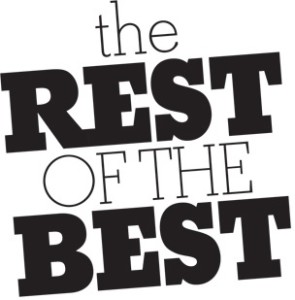
A couple of weeks back, I listed my favorite five shopper research methodologies. Needless to say a number of research methodologies didn’t make my list and of course a lot of readers offered additional suggestions. So this week I want to think about my pick of the shopper research methodologies that I didn’t include.
Focus groups
Being in Asia, where some marketers often struggle to access more technically sophisticated shopper research methodologies, I often come across the use of focus groups to understand shopping behavior. Focus groups do provide valuable insights into what people perceive they do when they shop and perhaps more critically why they do it. This qualitative understanding of motivation is tremendously useful in configuring programs. Focus groups also create valuable directional insights into where more focused research might be conducted. For me though focus groups are best used in the configuration of research hypotheses. In this case directional insight can be converted into potentially more focused and indeed quantifiable outcomes.
In-store observation
One correspondent was amazed that I hadn’t included in-store observation in my initial article. I guess my omission is a little surprising following the step-change in understanding of shopper behavior that pioneers like Paco Underhill spearheaded in the nineties. Of course there is a huge amount to be gained from all the modes of observation that now exist today. Observing actual behavior has an inherent advantage over learning about claimed behavior and it can create a very clear narrative around what people actually do. The data collected through observation allows shopper marketers to pinpoint potential issues in-store for further exploration using say eye-tracking work or virtual simulation. A caveat though is that observational work should not be the start-point of any research unless you first fully understand the target consumers and shoppers and the channels you need to prioritize.
Neuro-science and bio-metric based approaches
Thanks to my ex-colleague Sean Raw for asking about neuro-science and particularly combining it with other approaches like eye-tracking. The cool thing about these methods is they allow us to image shopper’s subconscious engagement with their environment. As yet portable brain-scanning tech is only available in limited markets but bio-scanning technology is rapidly becoming more accessible. Highly portable units are now available commercially which, like lie detectors, allow us to measure a subject’s response to environmental stimuli. Whilst neuro-science purists might discount bio-metric approaches, they are telling us a lot about shopper behavior. A pioneer in this area is Ken Hughes in Ireland who often delights audiences with demonstrations of the lack of engagement shoppers have with grocery environments. Combining brain scanning or bio-metric scanning with eye tracking and in-depth interviews can bring fabulous richness to shopper research programs, especially when they are used to really get to grips with understanding a specific target shopper’s behavior in a priority space (note also that these methods work fantastically in both offline and online environments).
Combining shopper research methodologies
The truth behind shopper research is that no one methodology is perfect and each methodology plays a quite specific role. As a result, we never suggest an approach which depends purely on one method alone. We are therefore always wary to advise marketers as to which shopper research methodology they should use without first determining the hypotheses they actually want to test. I know that this sounds like I’m teaching my grandmother to suck eggs, but in the last six months I’ve seen more than 20 pieces of shopper research that were conducted without this key stage.
With so many marketers entering the market for shopper research at the moment, its easy to be swayed by agencies proposing sexy new methodologies, if you need help navigating this feel free to reach out to me for advice.